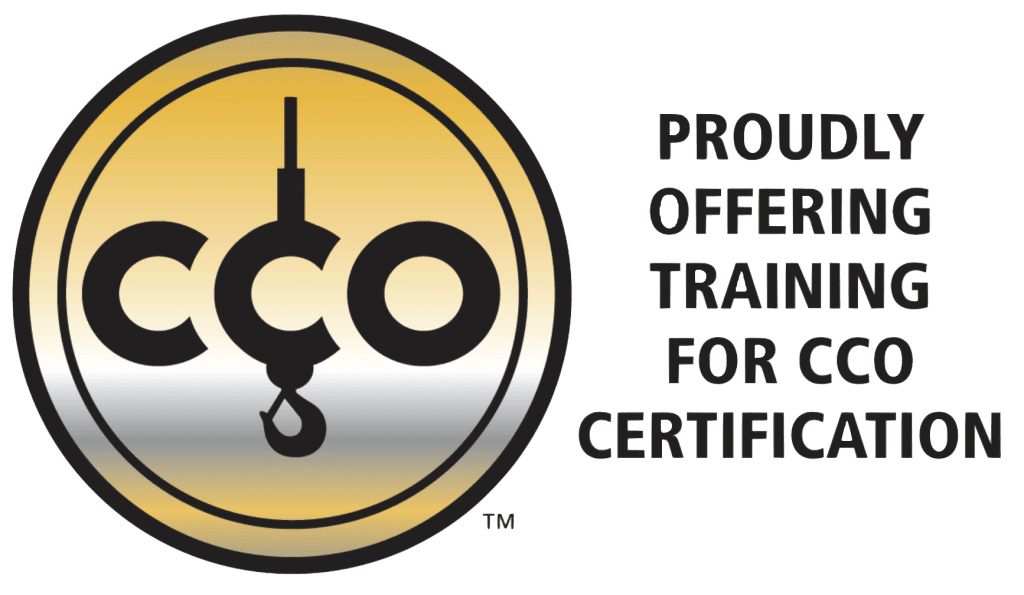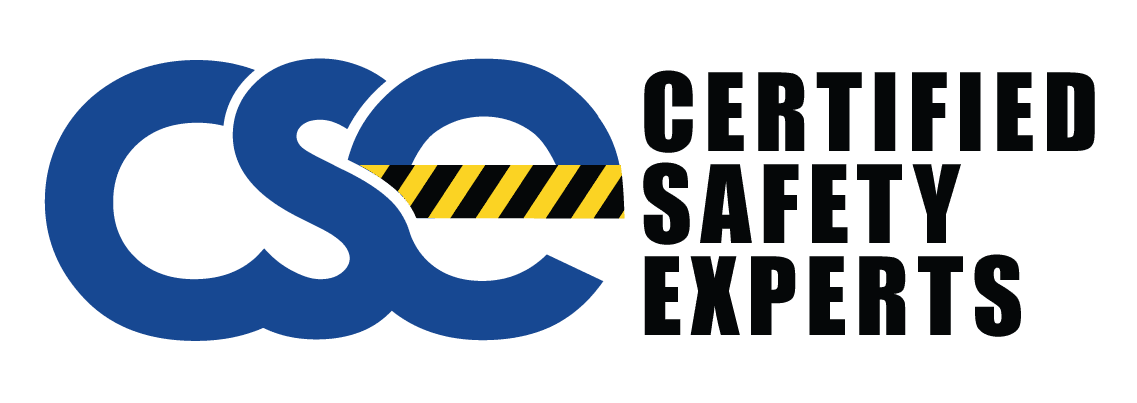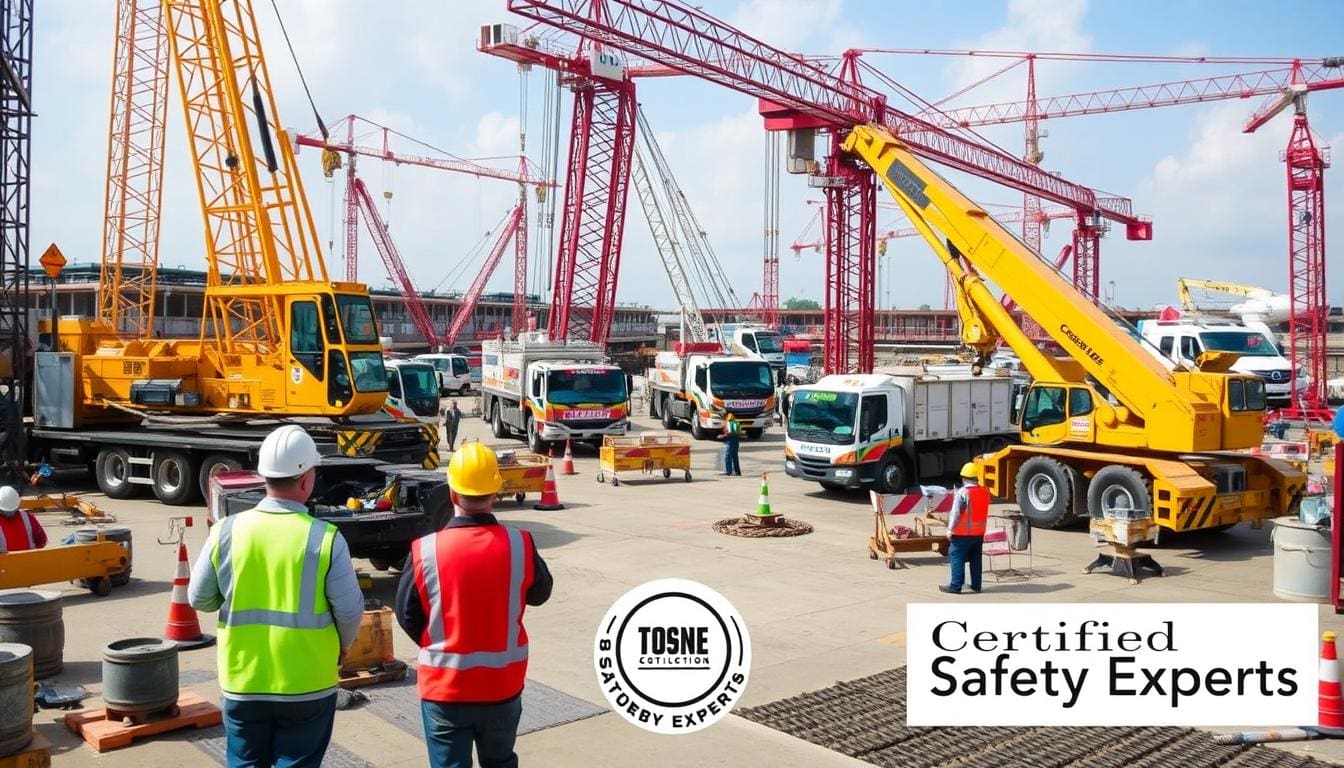Why is it so important to know about different crane inspections? In a field where safety is key, understanding the inspection process and maintenance needs is crucial. This section will explain the types of crane maintenance inspections that crane operators and owners must know. These inspections help keep equipment safe and efficient.
Daily checks, regular inspections, and non-destructive testing (NDT) are key to keeping crane equipment safe. These checks make sure cranes meet safety standards and help prevent accidents. Knowing how to do each inspection is vital for operators who want to follow industry rules and keep their machines running well.
Key Takeaways
- Understanding the different types of crane inspections is crucial for safety and compliance.
- Daily checks help to identify immediate issues before they become significant problems.
- Frequent and periodic inspections are essential for long-term safety and operational efficiency.
- Non-destructive testing (NDT) procedures ensure the structural integrity of cranes without causing damage.
- Regular inspections can prevent accidents and extend the lifespan of crane equipment.
Understanding Crane Inspection Criteria
Regular crane inspections are key for keeping your equipment safe and following crane inspection rules. Following the right crane inspection criteria makes sure your gear works well and safely. This part will explain the basics of doing crane inspections right.

Importance of Regular Inspections
Crane inspections are vital for spotting problems early. They help find wear, mechanical failures, and weak spots before they turn into big safety risks. By sticking to crane inspection rules, you avoid safety issues and costly downtime.
Key Factors in Crane Evaluation
Inspectors look at several important things to make sure a crane is safe. Here are the main things they check:
- Structural Integrity: They look for stress, cracks, and rust to make sure it can carry its load.
- Mechanical Systems: They check the crane’s moving parts for smooth working and wear.
- Electrical Components: They make sure electrical parts like circuit breakers and wiring are up to code.
- Safety Devices: They check safety gear like limit switches and emergency brakes to make sure they work right.
Following crane inspection rules and knowing what to look for keeps your crane running well. It ensures safety and follows the rules.
Cranes and OSHA Inspection Requirements
Following OSHA crane inspection rules is key for keeping cranes safe and working well in the U.S. The Occupational Safety and Health Administration (OSHA) sets strict guidelines for crane operators and owners.
OSHA requires different kinds of inspections. Daily or shift checks are routine, checking the crane’s basic safety. Monthly checks are more in-depth and need to be recorded. Annual checks are the most detailed, looking at all crane parts and major structures.

It’s also important who does the inspections. OSHA says only skilled people or certified inspectors can do them. These inspectors need a lot of knowledge and experience with cranes to check everything carefully.
How often you inspect cranes is crucial too. Daily or shift checks spot immediate problems. Monthly and annual checks keep cranes safe over time. Following these schedules helps find hazards early, reducing accidents and equipment failures.
By knowing and following crane inspection rules, businesses can make safer workplaces. They can avoid big fines and keep their cranes reliable. Regular checks by certified experts highlight the need for good maintenance and safety in the crane industry.
Crane Safety Standards: Keeping Your Equipment Compliant
Keeping your cranes safe is key for good work and keeping workers safe. It means knowing and following the best practices and rules.
Meeting Industry Safety Norms
To follow safety rules, you need a detailed crane inspection process. This checks things like structure, parts, and how it works. Experts should do regular checks to spot problems early.
- Adopt ANSI/ASME B30 standards for construction and mechanical integrity.
- Ensure compliance with OSHA’s crane regulations.
- Conduct frequent operator training to stay updated on best practices.
Common Safety Issues and How to Address Them
Even with strict crane safety standards, issues like overloading, not keeping up with maintenance, and mistakes by operators can happen. Here’s how to fix these:
- Overloading: Use load monitoring systems to stop going over capacity.
- Inadequate Maintenance: Have a regular crane inspection process to find wear and tear.
- Operator Error: Offer ongoing training and certification for crane operators.
By doing these things, companies can make their safety better and follow crane safety rules.
Comprehensive Crane Inspection Checklist
Making sure cranes work safely starts with a detailed inspection. This checklist helps companies check their equipment is ready and spot problems early.
- Pre-Operational Checks: Look over the crane for any damage or wear. Make sure it’s stable and sturdy.
- Mechanical Components: Check the hoist, hook, and wire rope work right. They should follow crane safety standards.
- Electrical Systems: Test electrical parts and controls. Make sure emergency stops and limit switches work.
- Fluid Levels: Check hydraulic and lubricant levels. Add or replace fluids as needed for best performance.
- Swing Mechanism: Make sure the crane moves smoothly and without trouble. Watch for strange noises or resistance.
- Brakes: Test the brakes with a load on. They should keep the crane steady when it’s not moving.
- Safety Devices: Check that all safety gear, like overload indicators and warning signals, work right.
- Control Systems: See if controls and indicators are clear and work well. Operators should easily see them.
- Load Handling: Make sure the crane can handle the maximum load it’s rated for. Test lifting to check everything works smoothly.
- Documentation: Keep detailed records of inspections and upkeep. This meets crane safety standards and rules.
Following this crane inspection checklist keeps businesses safe and in line with crane inspection criteria. Regular checks and upkeep stop accidents and make the crane last longer.
Mobile Crane Inspection Requirements
Mobile cranes need special inspections because they move around and are very useful. It’s important to check them often to make sure they work safely and well. Doing regular checks helps follow safety rules and makes these machines last longer.
Special Considerations for Mobile Cranes
When checking mobile cranes, we focus on their load capacity, how they handle different grounds, and their hydraulic systems. The crane’s load capacity changes with the ground it’s on. We must check the hydraulic systems well because problems can affect how the crane lifts and moves. It’s also key to look at the crane’s stability tools, like outriggers and stabilizers, to avoid accidents.
Common Inspection Pitfalls
Often, people forget to check the crane’s chassis and tires. Since these cranes move a lot, their tires and chassis get worn out. Checking these parts often can stop sudden breakdowns. Also, not keeping good records of inspections is a mistake. Good records help track the crane’s condition and make sure all needed maintenance is done.
By knowing and following these inspection rules, companies can make their operations safer and more efficient. Call our inspection services team at the given phone number to set up your next crane check. This ensures you follow all safety rules.




